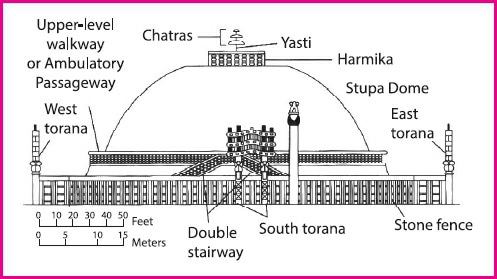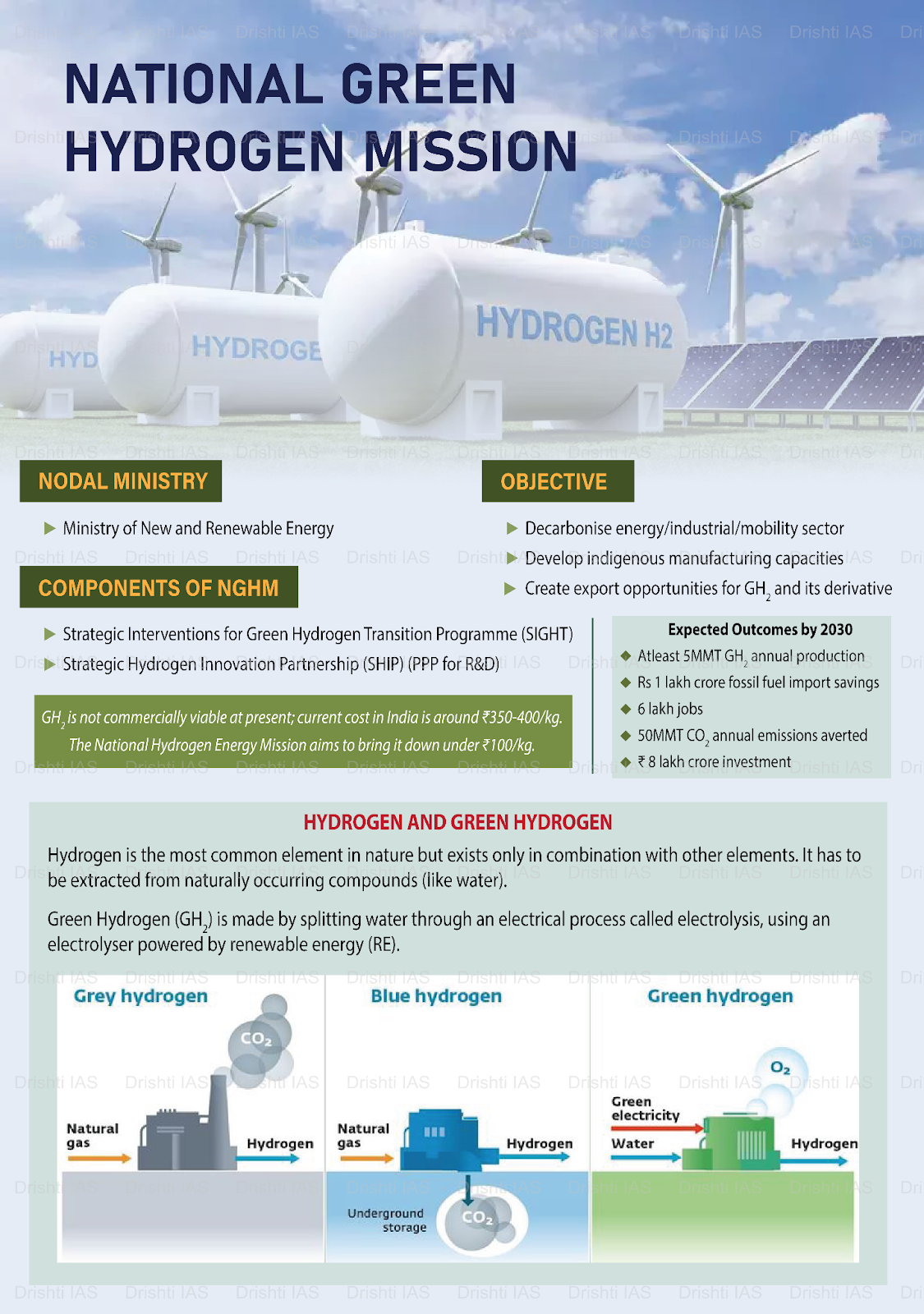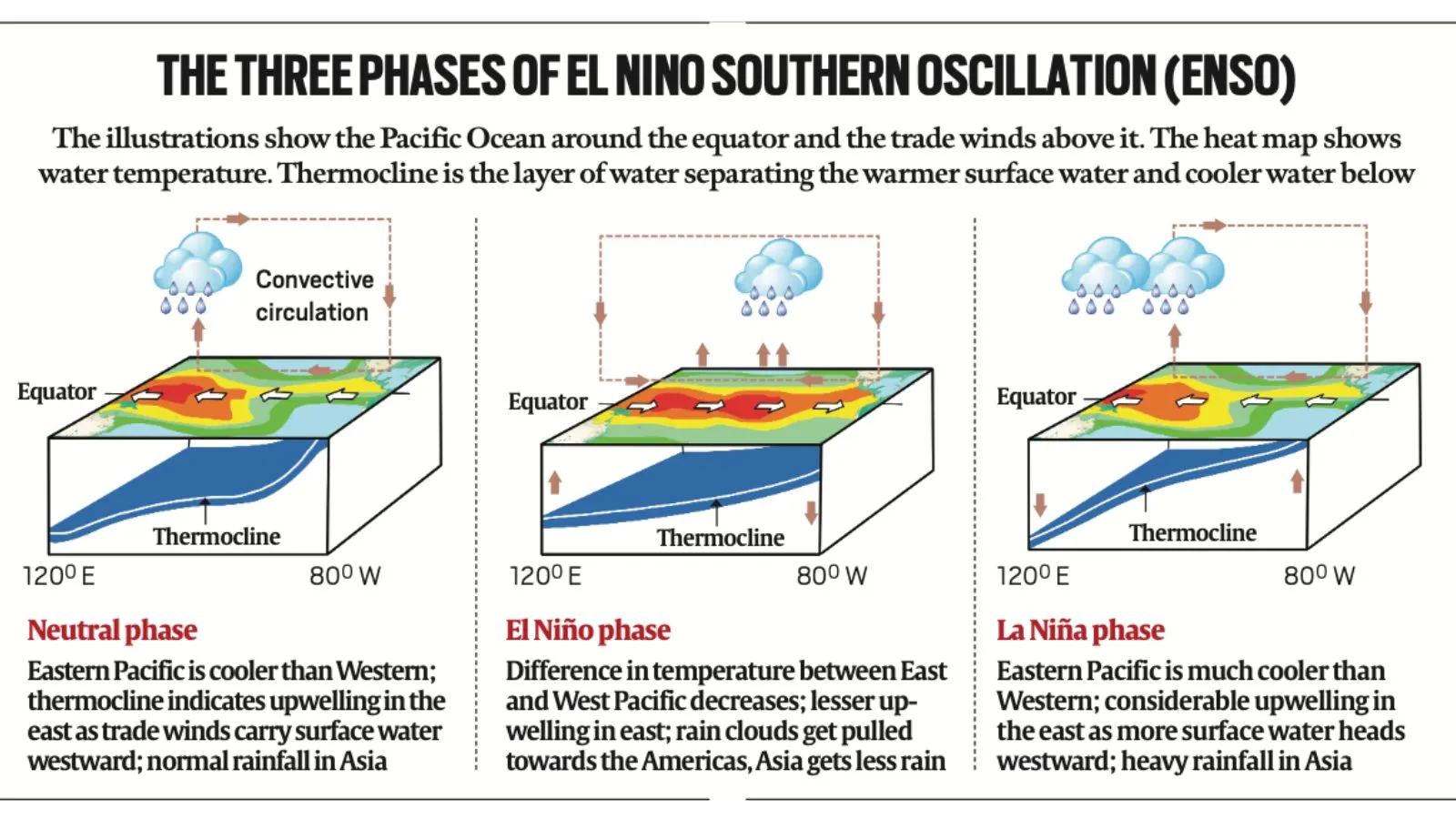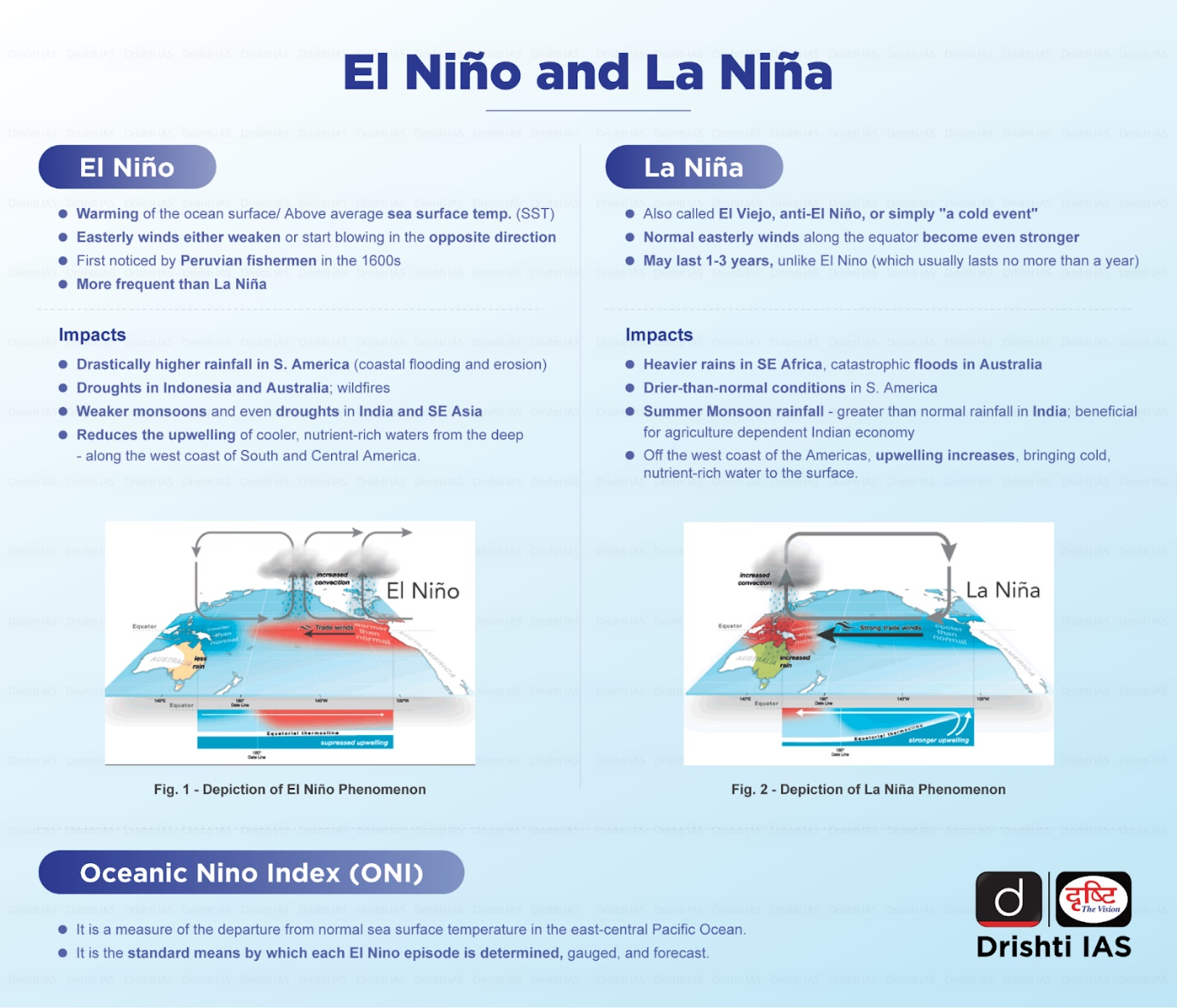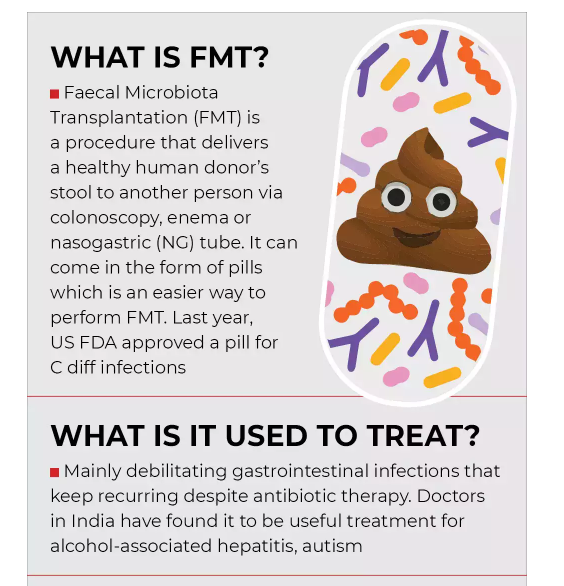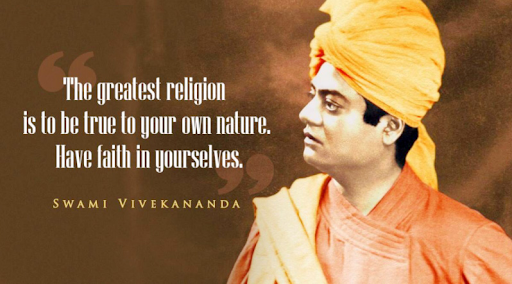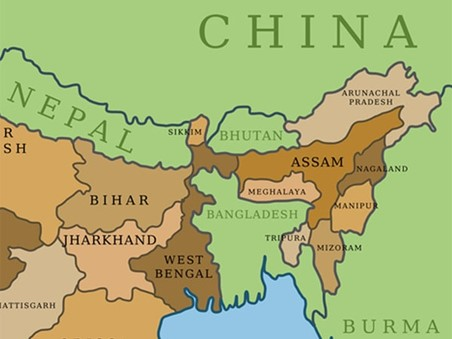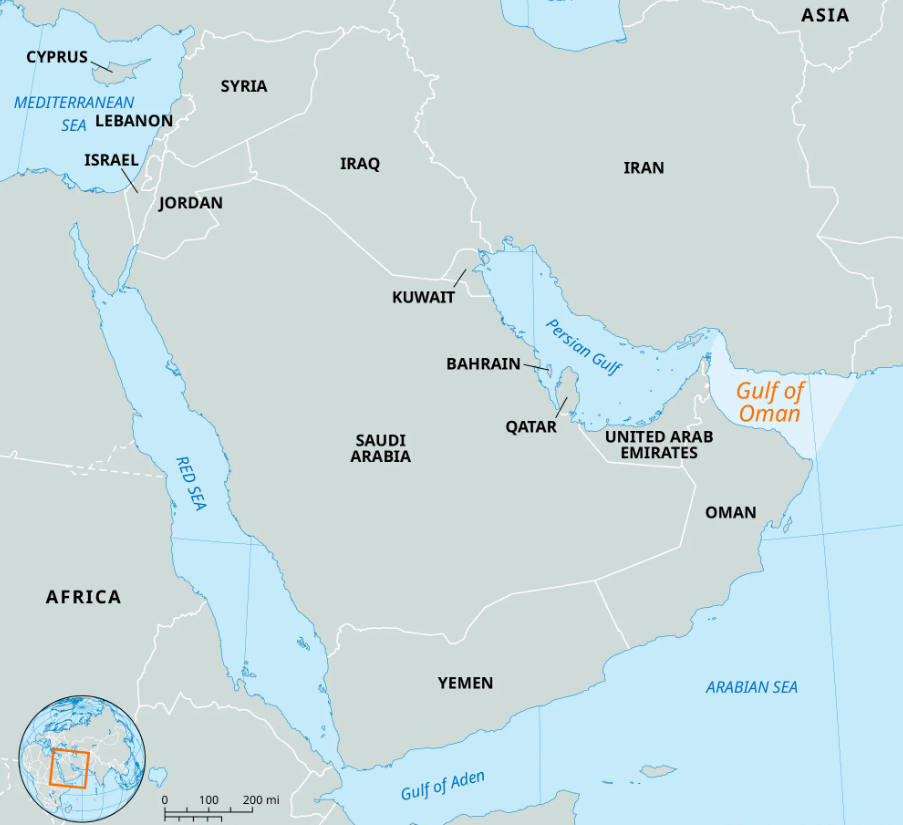Indian Heritage & Culture
Journey of Sanchi Stupa to Europe
For Prelims: East Gate of Sanchi Stupa, Sanchi Stupa, Toranas, Buddha, Satavahana Dynasty, Jataka Tales, Shalabhanjika, Manushi Buddhas, Enlightenment, Shunga Period, Archaeological Survey of India (ASI)
For Mains: Significance and preservation of India’s heritage sites, Buddhism
Why in News?
Recently, India’s External Affairs Minister visited the replica of the East Gate of Sanchi Stupa standing in front of Humboldt Forum museum in Berlin, Germany.
- It is a 1:1 reproduction of the original structure standing at almost 10 metres high and 6 metres wide, and weighing roughly 150 tonnes.
Journey of East Gate of Sanchi Stupa to Europe
- The East Gate of Sanchi Stupa was cast in plaster by Lieutenant Henry Hardy Cole for the Victoria and Albert Museum in the late 1860s.
- Multiple copies of this cast were later made, and displayed across Europe.
- A plaster cast of the original gate was on display in the entrance hall of the Königliches Museum für Völkerkunde Berlin from 1886.
- A cast of this preserved copy was made of artificial stone in 1970.
- The latest Berlin replica too traces its origin to this original cast.
- It was made with the help of 3D scanning, modern robots, skilled German and Indian sculptors, and enlarged photos of the original torana for aid.
What are Key Facts about the Sanchi Stupa?
- Construction of Sanchi Stupa: It was built by Ashoka in the third century BC.
- Its construction was overseen by Ashoka’s wife Devi, who hailed from the nearby trading town of Vidisha.
- The development of the Sanchi complex was supported by patronage from Vidisha’s mercantile community.
- Expansion: During the 2nd century BC (Shunga period), the stupa was enlarged with sandstone slabs, a circumambulatory walkway, and a harmika with a chattra (umbrella).
- From the 1st century BC to the 2nd century AD, four stone gateways or toranas were added, adorned with detailed carvings depicting Buddhist iconography and stories.
- Rediscovery of Sanchi Stupa: It was in abject ruins when it was discovered by British officer Henry Taylor in 1818.
- Alexander Cunningham led the first formal survey and excavations at Sanchi in 1851.
- Preservation Efforts: In 1853, Sikander Begum of Bhopal offered to send Sanchi gateways to Queen Victoria, but the removal plans were delayed due to the 1857 revolt and transportation issues.
- In 1868, the Begum renewed the offer, but the colonial authorities declined it, opting for in-situ preservation. A plaster cast of the eastern gateway was created instead.
- The site was restored to its present condition by Archaeological Survey of India (ASI) director-general John Marshall in the 1910s with funding from the begums of nearby Bhopal.
- Marshall’s efforts led to the creation of a museum in 1919 at the site to preserve artefacts and manage conservation.
- Architecture of Sanchi Stupa:
- Anda: It is a hemispherical mound built on earth.
- Harmika: Square railing on top of the mound. It is believed to be the living place of god.
- Chattra: It is the umbrella built on the top of the dome.
- Yashti: It is the central pillar supports a triple umbrella structure called chattra.
- Railing: It surrounds the stupa, demarcating the sacred area and providing a physical boundary between the holy space and the external environment.
- Pradakshinapatha (Circumambulatory Path): It is a walkway around the stupa that allows devotees to walk in a clockwise direction as a form of worship.
- Torana: Torana is a monumental gateway or entrance structure in Buddhist stupa architecture.
- Medhi: It refers to the base which forms a platform on which the main structure of the stupa stands.
- UNESCO Recognition: Sanchi Stupa was inscribed as a UNESCO World Heritage site in 1989.
What are the Key Features of the Gateways of Sanchi Stupa?
- Construction: The four gateways (toranas), oriented to the four cardinal directions, were constructed in the first century BCE.
- Gateways were built over a period of a few decades during the Satavahana dynasty's rule.
- Structure: These gateways are made of two square pillars which support a superstructure comprising three curved architraves (or beams) with spirally-rolled ends.
- Engravings: The pillars and the architraves are adorned with beautiful relief and sculptures depicting scenes from the Buddha’s life, stories from the Jataka tales, and other Buddhist iconography.
- It includes the shalabhanjika (a fertility emblem represented by a yakshi grasping the branch of a tree), elephants, winged lions, and peacocks.
- However, the gates do not represent the Buddha in his human form.
- Philosophical Significance: The three curved architraves (or beams) have the following philosophical significance.
- Upper Architrave: It represents the seven Manushi Buddhas (previous Buddhas incarnation).
- Middle Architrave: It depicts the scene of the Great Departure, when prince Siddhartha leaves Kapilavastu to live as an ascetic in search of enlightenment.
- Lower Architrave: It depicts Emperor Ashoka visiting the Bodhi tree under which the Buddha attained enlightenment.
Conclusion
- The Sanchi Stupa stands as a monumental testament to ancient Buddhist architecture and devotion. As a UNESCO World Heritage site, the stupa continues to inspire reverence and scholarly interest, bridging the past with contemporary global appreciation. Recent examples, such as Germany's construction of a replica of the East Gate of Sanchi Stupa, underscore the universal value of preserving such monuments.
|
Drishti Mains Question: Q.Discuss the architectural evolution and historical significance of the Sanchi Stupa |
UPSC Civil Services Examination, Previous Year Question (PYQ)
Prelims
Q. Consider the following historical places: (2013)
- Ajanta Caves
- Lepakshi Temple
- Sanchi Stupa
Which of the above places is/are also known for mural paintings?
(a) 1 only
(b) 1 and 2 only
(c) 1, 2 and 3
(d) None
Ans: (b)
Q.Some Buddhist rock-cut caves are called Chaityas, while the others are called Viharas. What is the difference between the two? (2013)
(a) Vihara is a place of worship, while Chaitya is the dwelling place of the monks
(b) Chaitya is a place of worship, while Vihara is the dwelling place of the monks
(c) Chaitya is the stupa at the far end of the cave, while Vihara is the hall axial to it
(d) There is no material difference between the two
Ans: (b)
Mains
Q. Indian philosophy and tradition played a significant role in conceiving and shaping the monuments and their art in India. Discuss. (2020)
Q. Early Buddhist Stupa-art, while depicting folk motifs and narratives successfully expounds Buddhist ideals. Elucidate (2016)


Science & Technology
International Cooperation on Green Hydrogen
For Prelims: International Conference on Green Hydrogen 2024 (ICGH-2024), G20 Nations, Paris Commitments, Green Hydrogen, International Energy Agency (IEA), Grey Hydrogen, Electrolysis, Fuel Cells, Rare Materials, Hydrogen Council, Horizon Europe, Global Hydrogen Coalition.
For Mains: International cooperation for scaling up production of green hydrogen.
Why in News?
Recently, the Prime Minister (PM) virtually addressed the second International Conference on Green Hydrogen 2024 (ICGH-2024) being held at Bharat Mandapam, New Delhi.
- The PM emphasised the need for international cooperation to scale up green hydrogen production, reduce costs, and promote research and development.
What are Key Highlights of ICGH-2024?
- Counting India’s Achievements: India is among the first G20 nations to fulfil its Paris commitments on green energy. India’s commitments were fulfilled 9 years ahead of the target of 2030.
- India pledged to increase non-fossil energy capacity to 500 GW (gigawatts) and reduce the total projected carbon emissions by 1 billion tonnes by 2030.
- Installed non-fossil fuel capacity in India increased by nearly 300% over the past decade.
- Emerging Importance of Green Hydrogen: Green Hydrogen is identified as a key component in the global energy landscape, with potential to decarbonise difficult-to-electrify sectors such as refineries, fertilisers, steel, and heavy-duty transportation.
- It can also serve as a storage solution for surplus renewable energy.
- Investment in Research: The conference called for investments in cutting-edge research and development, partnerships between industry and academia and encouragement for start-ups and entrepreneurs of the Green Hydrogen.
- PM urged the domain experts and the scientific community to lead the way in Green Hydrogen adoption.
- G20 Summit Insights: PM underlined the New Delhi G-20 Leaders’ declaration that adopted five high-level voluntary principles on Hydrogen that are helping in the creation of a unified roadmap.
- Critical Questions: PM asked about ways to improve electrolyser efficiency, use seawater and municipal wastewater for production, and explore Green Hydrogen's role in public transport, shipping, and waterways.
Note
- India has announced an exclusive partnership with the European Hydrogen Week, set to take place in November 2024.
- It highlights India’s intent to address the green regulations of the European Union.
- Also, Indian Railways plans field trials of the first hydrogen fuelled train in January 2025.
- A 1200 KW DEMU (Diesel Electric Multiple Unit) will be converted into a hydrogen fuel cell-based DPRS (Distributed Power Rolling Stock) for the trials.
Why International Cooperation is Needed in Promotion of Green Hydrogen?
- High Production Costs: According to the International Energy Agency (IEA), the cost of producing green hydrogen can range from USD 3 to USD 8 per kilogram, significantly higher than grey hydrogen produced from fossil fuels.
- Technology and Infrastructure Investment: The cost of alkaline electrolysers has decreased by 40% between 2014 and 2019, but further cost reductions are needed to make green hydrogen competitive.
- Electrolysis Costs: Green hydrogen is produced through electrolysis, which requires substantial amounts of electricity. As of 2023, the production cost of green hydrogen remains high compared to conventional hydrogen.
- Efficiency of Electrolyzers: According to India's Ministry of New and Renewable Energy, current electrolyzers are not yet efficient enough for widespread adoption. Research and development are required to improve efficiency and reduce costs.
- Resource Availability: According to the European Commission, the availability of rare materials for electrolyser and fuel cells presents another challenge.
- The need for metals like platinum and iridium can constrain the scalability of green hydrogen technologies.
- Scaling Up Production: Scaling up production to meet global demands poses a significant challenge.
- The EU's Hydrogen Roadmap indicates that achieving the necessary scale for green hydrogen production requires coordinated efforts across industries and governments.
How can International Cooperation Help in Promotion of Green Hydrogen?
- Scaling Up Production: An estimate from a recent Hydrogen Council report suggests that Asia will require USD 90 billion investment in hydrogen projects by 2030.
- According to the IEA, joint ventures and cross-border collaborations can significantly accelerate the scaling of green hydrogen production technologies by leveraging diverse technological capabilities and manufacturing resources.
- Economies of Scale: The European Commission highlights that joint international initiatives can drive down costs through shared investments and bulk purchasing of materials.
- For example, a group of 30 pioneering European energy companies officially launched “HyDeal Ambition” with the aim of delivering 100% green hydrogen across Europe at a low cost of Euro 1.5/kg.
- Shared Infrastructure: Shared infrastructure for green hydrogen production, storage, and distribution can lower investment costs and make the technology more economically viable.
- Collaborative infrastructure projects, like the Asia-Pacific Hydrogen Association's regional networks, illustrate how shared facilities can decrease costs.
- Innovation Through Partnerships: Global partnerships drive innovation by bringing together diverse research perspectives and funding sources.
- E.g., the Global Hydrogen Coalition is a prominent example of a platform that brings together governments, industry leaders, and research institutions to drive innovation in hydrogen technologies.
- Unified Policies and Regulations: International collaboration helps in developing cohesive policies and regulations that support green hydrogen development.
- The 2023 G20 Summit, under India's presidency, adopted voluntary principles for green hydrogen which would help in creating a common roadmap.
- Investment and Funding: Joint funding initiatives and investment from international sources can accelerate research and deployment.
- E.g., Several research and innovation projects on hydrogen are ongoing within Horizon Europe, the EU’s Framework Programme for Research and Innovation.
- These projects are managed through the Clean Hydrogen Partnership (2021-2027), a joint public-private partnership supported by the European Commission.
- E.g., Several research and innovation projects on hydrogen are ongoing within Horizon Europe, the EU’s Framework Programme for Research and Innovation.
Conclusion
International cooperation is essential for advancing green hydrogen. By sharing technology, harmonising policies, and pooling investments, nations can overcome production and infrastructure challenges. Collaborative efforts ensure efficient global supply chains, reduce costs, and foster public acceptance. Unified global action accelerates the transition to a sustainable energy future and maximises green hydrogen's potential.
|
Drishti Mains Question: Q. How can international cooperation contribute to the promotion and development of green hydrogen as a sustainable energy source? |
UPSC Civil Services Examination Previous Year Question (PYQ)
Prelims
Q. Consider the following heavy industries: (2023)
- Fertilizer plants
- Oil refineries
- Steel plants
Green hydrogen is expected to play a significant role in decarbonizing how many of the above industries?
(a) Only one
(b) Only two
(c) All three
(d) None
Ans: (c)
Q.With reference to green hydrogen, consider the following statements : (2023)
- It can be used directly as a fuel for internal combustion.
- It can be blended with natural gas and used as fuel for heat or power generation.
- It can be used in the hydrogen fuel cell to run vehicles.
How many of the above statements are correct?
(a) Only one
(b) Only two
(c) All three
(d) None
Ans: (c)
Q.Hydrogen fuel cell vehicles produce one of the following as “exhaust” (2010)
(a) NH3
(b) CH4
(c) H2O
(d) H2O2
Ans: (c)


Geography
La Niña Predictions
For Prelims: La Niña, El Niño Southern Oscillation (ENSO), the eastern Pacific, trade winds, climate change, National Oceanic and Atmospheric Administration (NOAA), Bureau of Meteorology (BoM), India Meteorological Department (IMD), Madden Julian Oscillation (MJO), the Arabian Sea, cyclone.
For Mains: Differentiate between El Niño and La Niña, its affect on Indian weather conditions.
Why in News?
Recently, all major global meteorological agencies have notably missed the mark in their predictions for La Niña in 2024.
- India had relied on this crucial climate phenomenon to bring increased rainfall during August-September 2024.
What is La Niña?
- La Niña, meaning "The Little Girl" in Spanish, is a phase of the El Niño Southern Oscillation (ENSO), a phenomenon that significantly drives global natural climate variability.
- ENSO is characterized by fluctuations in sea surface temperatures across the tropical Pacific Ocean, resulting from atmospheric variations above.
- These changes disrupt global atmospheric circulation and have widespread impacts on weather patterns across the world.
- The ENSO occurs in irregular cycles ranging from two to seven years and comprises three phases: warm (El Niño, or "The Little Boy" in Spanish), cool (La Niña), and neutral.
- During the neutral phase, the eastern Pacific (near the northwestern coast of South America) is cooler than the western Pacific (around the Philippines and Indonesia).
- This temperature difference arises due to prevailing trade winds, driven by Earth's rotation, which move from east to west between 30 degrees north and south of the equator, pushing warmer surface water westward.
- As a result, cooler waters from below rise to the surface to replace the displaced warm water.
- During the El Niño phase, trade winds weaken, resulting in less displacement of warm waters along the American coasts, causing the eastern Pacific to warm more than usual.
- In the La Niña phase, trade winds strengthen, pushing larger volumes of water toward the western Pacific, leading to cooler temperatures in the eastern Pacific.
- In India, El Niño is typically linked to reduced rainfall during the monsoon season, while La Niña tends to enhance monsoon activity.
- The most recent El Niño event occurred between June 2023 and May 2024, following one of the longest recorded La Niña episodes, which lasted from 2020 to 2023.
- In India, El Niño is typically linked to reduced rainfall during the monsoon season, while La Niña tends to enhance monsoon activity.
- The impacts of both El Niño and La Niña-related hazards, including extreme temperatures, heavy rainfall, and droughts, have been intensified by anthropogenic climate change.
What did Global Weather Models Predict in 2024?
- One of the strongest El Niño events on record concluded in June 2024, after which the ENSO entered a neutral phase.
- Initial forecasts from multiple global weather models predicted the onset of La Niña conditions around July. However, by mid-July, it became evident that La Niña would be delayed.
- The US-based NOAA indicated that the transition from neutral to positive sea surface temperatures, signaling the shift from ENSO neutral to La Niña, would likely occur between August and October.
- Similarly, the Bureau of Meteorology (BoM) in Australia maintained a La Niña ‘watch’ in July 2024, predicting the development of cooler-than-usual sea surface conditions in the latter half of the year.
- Since its initial Long Range Forecast issued in mid-April, the India Meteorological Department (IMD) consistently projected the emergence of La Niña.
- Crucially, La Niña was expected to enhance rainfall in August and September 2024, with seasonal prediction hinging on La Niña's development, which was anticipated to result in 'above normal' rainfall during the final two monsoon months.
Why were Initial Predictions off the Mark?
- The reason cited by weather meteorologists for the error in predicting La Niña’s onset is its expected mild intensity.
- Weather models tend to detect signals more accurately during strong La Niña (or El Niño) phases, but are less precise with weaker ones.
- Additionally, various factors influence surface and subsurface conditions across the Pacific Ocean, including inter-seasonal variability in atmospheric conditions, winds, and pressure.
- These are closely linked to the movement of the Madden Julian Oscillation (MJO), an eastward-moving band of rain-bearing winds and clouds.
- The interaction of these different weather systems complicates predictions.
- Recent forecasts suggest that the first signs of La Niña's onset will likely appear by late September or early October, with La Niña peaking in November and continuing throughout the winter in the northern hemisphere.
What will be the La Niña’s Impact on Indian Weather?
- La Niña is typically associated with enhanced rainfall during India's southwest monsoon.
- However, since 2024 monsoon season is nearly over and La Niña conditions have yet to develop in the equatorial Pacific Ocean, this climatic phenomenon will not directly influence the country's rainfall at present.
- If La Niña begins by late September or October, it may influence rainfall during the northeast monsoon season (October-December), which primarily affects Tamil Nadu, coastal Andhra Pradesh, Rayalaseema, southern interior Karnataka, and Kerala.
- Climatologically, La Niña is not favorable for northeast monsoon rainfall, although there have been exceptions in the past.
- The north Indian Ocean basin, including the Bay of Bengal and the Arabian Sea, typically experiences cyclone development during March to May and October to December, with peak activity in May and November.
- During La Niña years, there is a higher likelihood of frequent cyclogenesis, with storms potentially being more intense and longer-lasting.
- La Niña years have historically been associated with harsher and colder winters.
|
Drishti Mains Question: Discuss the phenomenon of La Niña and its impact on the Indian monsoon. How does it differ from El Niño in terms of its effects on India's climate? |
UPSC Civil Services Examination, Previous Year Question (PYQ)
Prelims
Q. La Nina is suspected to have caused recent floods in Australia. How is La Nina different from El Nino? (2011)
- La Nina is characterised by an usually cold ocean temperature in equatorial Indian Ocean whereas El Nino is characterised by unusually warm ocean temperature in the equatorial Pacific Ocean.
- El Nino has adverse effect on south-west monsoon of India but La Nina has no effect on monsoon climate.
Which of the statements given above is/are correct?
(a) 1 only
(b) 2 only
(c) Both 1 and 2
(d) Neither 1 nor 2
Ans: (d)
Mains
Q. Drought has been recognized as a disaster in view of its spatial expanse, temporal duration, slow onset and lasting effects on vulnerable sections. With a focus on the September 2010 guidelines from the National Disaster Management Authority (NDMA), discuss the mechanisms for preparedness to deal with likely El Nino and La Nina fallouts in India? (2014)


Important Facts For Prelims
Fecal Microbiota Transplantation
Why in News?
The concept of using fecal matter as a medical treatment, known as fecal microbiota transplantation (FMT), has gained attention as a game-changer for treating gut disorders, despite its initial unsettling nature.
- India has made progress in this field, and the treatment is reshaping lives, though it still faces challenges.
What is Fecal Microbiota Transplantation?
- About: FMT involves the transfer of fecal material from a healthy donor into the gastrointestinal tract of a patient with an imbalanced or unhealthy gut microbiota.
- The primary goal is to repopulate the recipient’s gut with beneficial bacteria from the donor, helping to restore a healthy microbiome and improve gut health.
- Benefits: The human gut is home to a diverse community of microorganisms that play crucial roles in digestion, immune function, and protection against harmful pathogens.
- FMT helps to correct disruptions in the gut microbiome, often caused by factors such as antibiotics, steroids, or infections like Clostridium difficile (a bacterium that can cause diarrhoea, colitis, and serious bowel problems).
- By introducing healthy bacteria, FMT aims to restore balance and enhance overall gut function.
- Challenges and Limitations: FMT is not yet regulated by central health authorities like the Indian Council of Medical Research (ICMR), which raises concerns about standardisation and safety.
- The process requires stringent donor screening to avoid risks, including infectious diseases and microbiome diversity.
- The 'yuck' factor linked with fecal material remains as a barrier for many patients, despite the treatment's efficacy.
- Future of FMT: Researchers stress that more studies are needed to fully understand the role of microbiomes and establish FMT as a standard care practice.
- Trials and studies are essential to refine protocols and ensure the safety and effectiveness of FMT. Comprehensive guidelines and protocols are needed to standardise the practice and address ethical concerns.
Gut Microbiota
- It refers to the vast collection of trillions of microorganisms, including bacteria, viruses, fungi, and protozoa, that inhabit the human gastrointestinal tract. This diverse community plays a crucial role in maintaining overall health and supporting various bodily functions.
- It helps in breaking down complex food components and produces essential vitamins like B12 and K. Beneficial microbes prevent harmful bacteria from colonising the gut.
- Metabolism & Energy Balance: Influences fat storage, energy absorption, and has links to obesity, metabolic disorders and including Autism.
- Gut-Brain Connection: Affects mood and mental health through the gut-brain axis, linked to anxiety and depression.
UPSC Civil Services Examination Previous Year Question (PYQ)
Prelims
Q. Consider the following statements in respect of probiotics:
- Probiotics are made of both bacteria and yeast.
- The organisms in probiotics are found in foods we ingest but they do not naturally occur in our gut.
- Probiotics help in the digestion of milk sugars.
Which of the statements given above is/are correct?
(a) 1 only
(b) 2 only
(c) 1 and 3
(d) 2 and 3
Ans: (c)
Exp:
- Probiotics are a combination of live beneficial bacteria and/or yeasts that naturally live in your body. Bacteria is usually viewed in a negative light as something that makes you sick. Hence, statement 1 is correct.


Important Facts For Prelims
High Altitude Pathogens
Why in News?
Recently, studies over Japan at altitudes up to 10,000 feet, have found different bacteria and fungi types in the air, which could be the cause of Kawasaki diseases.
- Scientists have been studying airborne microbes since the 1920s, capturing spores and other biological particles floating in the atmosphere.
What are the Key Facts about the Study?
- Air Sampling Over Japan: Researchers conducted flights to collect airborne particles over the Sea of Japan, focusing on air masses from China.
- The samples contained a rare mineral called hafnium, likely originating from Chinese mines.
- Northeastern China could be a significant source of airborne pathogens due to extensive farming, livestock operations, and soil erosion.
- Connection to Kawasaki Disease: The study was inspired by research linked to Kawasaki disease.
- It was observed that Kawasaki disease cases in Japan increased when winds blew from northeast China. This suggests that winds may transport pathogens or other elements that contribute to the disease.
Hafnium
- Hafnium is a good absorber of neutrons and is used in the control rods of nuclear reactors.
- Hafnium is also used in vacuum tubes as a getter, a material that combines with and removes trace gases from vacuum tubes.
- Hafnium has been used as an alloying agent in iron, titanium, niobium and other metals.
What is Kawasaki Disease?
- About: Kawasaki disease, or Kawasaki syndrome, is an inflammation, in the walls of blood vessels that carry blood throughout the body.
- The inflamed blood vessels increases the risk of tearing or narrowing, limiting blood flow to tissues and organs.
- Prevalence: It primarily affects children aged 6 months to 5 years.
- It occurs in about 10 to 20 per 100,000 children under 5 in the US and Canada, while in Japan, Korea, and Taiwan, it affects 50 to 250 per 100,000 children under 5.
- Causes: The exact cause of Kawasaki disease is unknown, but it is suspected to be linked to bacterial or viral infection, environmental factors, or genetics.
UPSC Civil Services Examination, Previous Year Question (PYQ)
Prelims
Q. Consider the following kinds of organisms: (2012)
- Bacteria
- Fungi
- Flowering plants
Some species of which of the above kinds of organisms are employed as biopesticides?
(a) 1 only
(b) 2 and 3 only
(c) 1 and 3 only
(d) 1, 2 and 3
Ans: (d)


Rapid Fire
132nd Anniversary of Swami Vivekananda's 1893 Chicago Speech
Recently, on the 132nd anniversary of Swami Vivekananda's 1893 Chicago speech, the Prime Minister of India highlighted its enduring message of unity, peace, and brotherhood, emphasising its continued inspiration for generations.
- Swami Vivekananda, a key figure in introducing Hinduism, Yoga, and Vedanta to the West, spoke at the Parliament of the World’s Religions (PWR) in Chicago in 1893, advocating for religious tolerance.
- He condemned sectarianism, bigotry (complete intolerance of any belief), and fanaticism, highlighted Hinduism’s inclusivity with its sheltering of Jews and Zoroastrians and aligned his message with the Bhagavad Gita’s teaching of universal unity.
- PWR originating from the 1893 World's Columbian Exposition in Chicago, it serves as a global platform for interfaith dialogue. Based in Chicago, it is an international NGO affiliated with the United Nations Department of Public Information.
- Swami Vivekananda was born as Narendranath Datta in Calcutta on 12th January, 1863. He was the chief disciple of Ramakrishna Paramhansa and advocated the doctrine of service, education, and spiritual upliftment.
-
He founded the Ramakrishna Mission in 1897 to propagate the ideals of Advaita Vedanta. He died in 1902 at Belur Math, the headquarters of Ramakrishna Math & Ramakrishna Mission.
-
- National Youth Day is celebrated every year to observe the birth anniversary of Swami Vivekananda.
Read more: Swami Vivekanada


Rapid Fire
IGI Among the World's Best Connected Airports
According to the Official Airline Guide (OAG)’s report, Delhi’s Indira Gandhi International Airport (IGIA) secured 24th position (among the top 50 most internationally connected airports worldwide) reflecting its growing importance as a global aviation hub.
- OAG is the world’s leading data platform for the global travel industry.
- According to the report, the first position was secured by London’s Heathrow Airport (LHR), followed by Kuala Lumpur International Airport (KUL) in Malaysia.
- IGI Airport has been awarded as the first NetZero Carbon Emission Compliant airport in India. It is the only airport in the country with four runways.
- It also inaugurated the country’s first elevated cross taxiway in 2023.
- India’s Aviation Sector:
- India has emerged as the third-largest domestic aviation market in the world, after the USA and China.
- India's airport network has witnessed a remarkable transformation, doubling its operational airports from 74 in 2014 to 148 in April 2023, facilitating increased air travel accessibility.
- The Ministry of Civil Aviation (MoCA) has taken initiatives to work towards carbon neutrality and achieving net zero carbon emissions at airports in the country.
Read More: India's Ambitious Airport Expansion Plan


Rapid Fire
Beekeeping as Deterrent on Bangladesh Border
Recently, the Border Security Force (BSF) has started using beekeeping as an innovative strategy to deter cross-border infiltration and smuggling activities from Bangladesh.
- BSF jawans have been trained to use apiaries—box-like structures with frames where bees build hives.
- The bees are used to create a natural deterrent along the border, as the threat of bee stings discourages smugglers and infiltrators from approaching the fence.
- Since the installation of the apiaries, incidents of fence-cutting and illegal entry have almost reached zero.
- The initiative not only serves a security purpose but also provides jawans with the opportunity to learn beekeeping, which they can continue as a source of income after retirement.
- Bangladesh and India share a 4,096-kilometre border, the fifth-longest in the world.
- The border touches the Indian states of Assam, West Bengal, Mizoram, Meghalaya, and Tripura.
Read More: India-Bangladesh Relations


Rapid Fire
Exercise Eastern Bridge
The 7th edition of the bilateral air exercise between Indian Air Force (IAF) and Royal Oman Air Force is scheduled to be conducted from 11th to 22nd September 2024 at Masirah, Oman.
- It will include complex aerial manoeuvring, air-to-air and air-to-ground operations, and logistical coordination.
- The first edition was held between the two Air Forces at Thumrait, Oman in 2009.
- India’s Other Military Exercise with Oman:
- Naseem Al-Bahr: Between Indian Navy and Royal Navy of Oman.
- AL Najah: Between Indian and Royal Army of Oman.
- Oman Location: Oman's strategic location near the entrance to the Strait of Hormuz and overlooking the Arabian Sea makes it an important partner of India in West Asia and the Indian Ocean region.
Read More: India-Oman Strategic Dialogue


Rapid Fire
Philadelphi Corridor
The Israeli Prime Minister intends to control the Philadelphi corridor, including the Rafah crossing after its occupation in the Israel-Hamas war.
- The demand threatens to stall negotiations for a ceasefire with Hamas.
- Both Egypt and Hamas reject Israeli military presence on the Philadelphi corridor.
- Philadelphi Corridor:
- It is a 14 kilometres long strip of land that represents the entirety of the border area between Gaza and Egypt.
- It includes the Rafah crossing and runs from the Mediterranean Sea to the Kerem Shalom crossing with Israel.
- Under the Camp David peace treaty 1979, a limited number of Egyptian troops were allowed, but no heavy armour was permitted.
- After the 2005 Israeli withdrawal from Gaza, the corridor was designated a demilitarised border zone.
- Since 2005, Egypt and the Palestinian Authority were responsible for managing the corridor.
- It was the only link for Gaza with the outside world not controlled by Israel.
- Hamas gained control of Gaza in 2007, which led to increased tension and ongoing cross-border smuggling activities.
Read More: Israel-Hamas Conflict and its Global Impact



